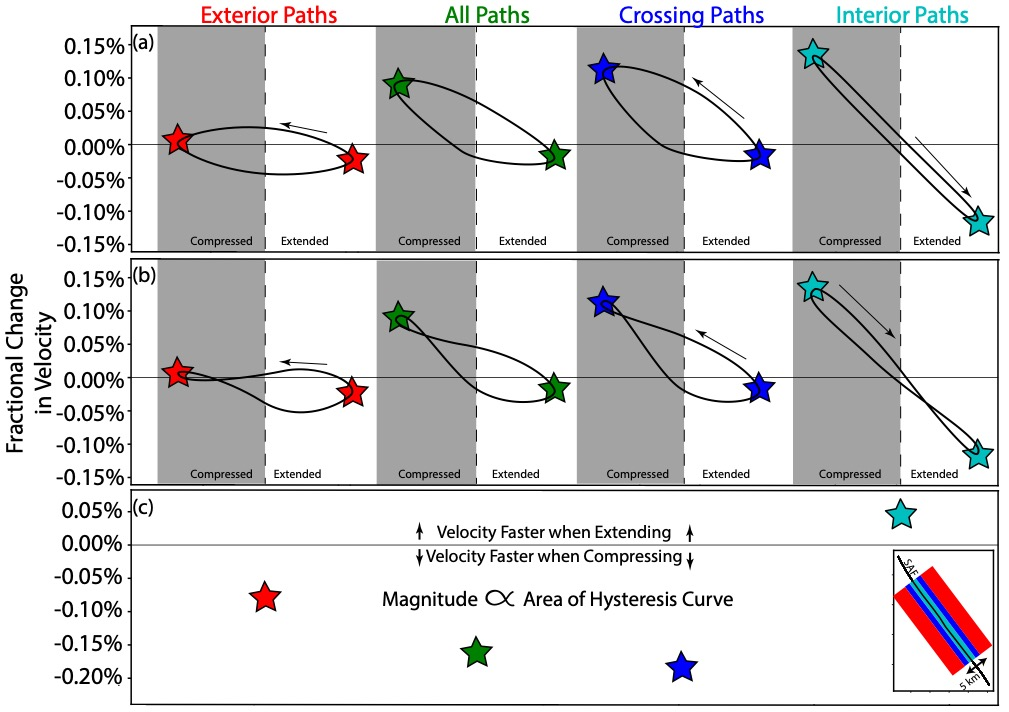On Thursday, June 13, there will be a lecture by: Andrew A. Delorey (Los Alamos National Laboratory, Los Alamos, New Mexico, USA)
Place: GFÚ Lecture Hall / 4:00 pm
Host: Petr Kolínský (Structure of Continental Lithosphere)
Measuring the Nonlinear Elasticity of Rocks in the Earth to Reveal Fracture Density and Stress Conditions
Most investigations in seismology are performed with the assumption that rocks in the subsurface behave with linear elasticity and fast dynamics, and this is usually a good approximation. In laboratory rock samples it is well-known and commonly observed that the elasticity of rocks is highly nonlinear and exhibits slow dynamics (finite relaxation times). Laboratory rock samples exhibit behaviors such as hysteresis and conditioning that violate the assumptions of linear elasticity and fast dynamics. These behaviors reveal interesting and important properties of rocks, such as fracture density, permeability, and stress orientation, which have many real-world applications. To observe these behaviors, the elasticity of rocks must be observed at different strains. Fortunately, the Earth experiences natural strain cycles such as those associated with lunar and solar tides, variations in atmospheric loading, and variations in water loading. By measuring small temporal changes in seismic velocities associated with these strain cycles, we can at least partially construct the strain-modulus relationship. In conjunction with laboratory experiments, we can interpret the strain-modulus relationship in terms of important geophysical properties both in reservoir and active tectonic settings. Traditional, strain-averaged measurements would be a single point if shown on the axes in the laboratory and Earth examples shown below.

Delorey, A. A., R. A. Guyer, G. H. R. Bokelmann, and P. A. Johnson, 2021, Probing the Damage Zone at Parkfield, Geophys Res Lett, 48, no. 13, doi: 10.1029/2021GL093518.

